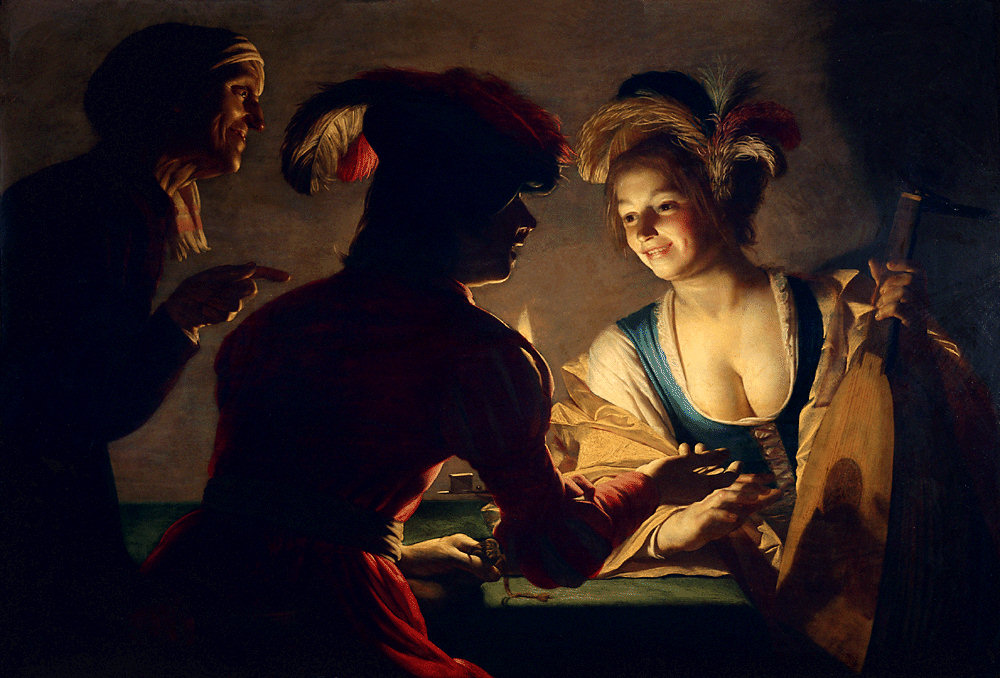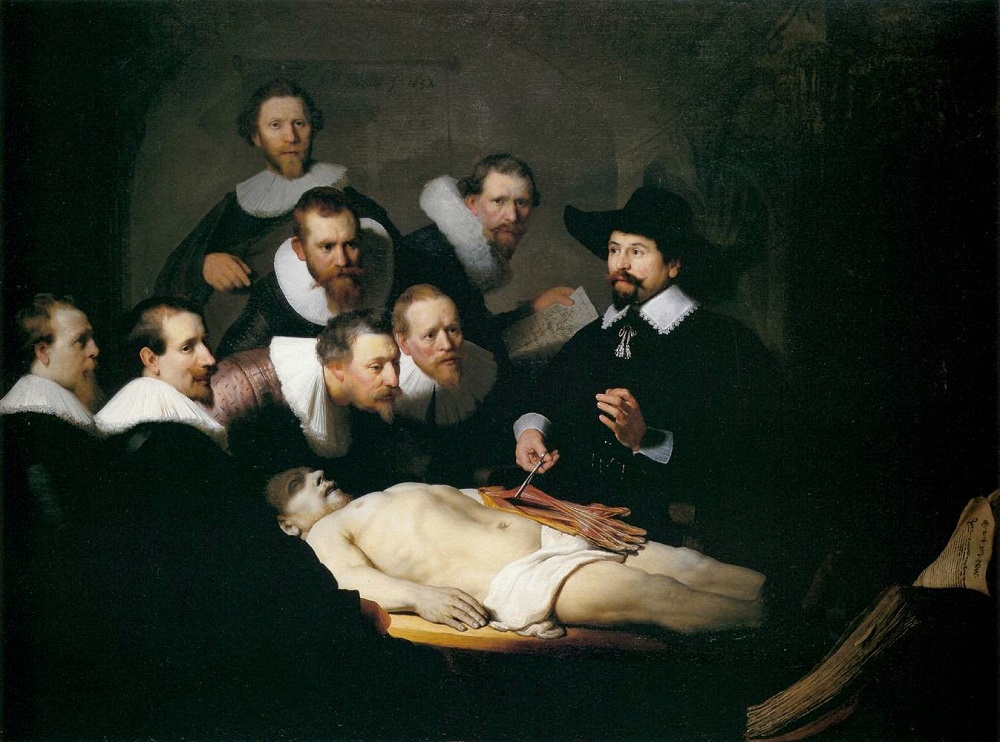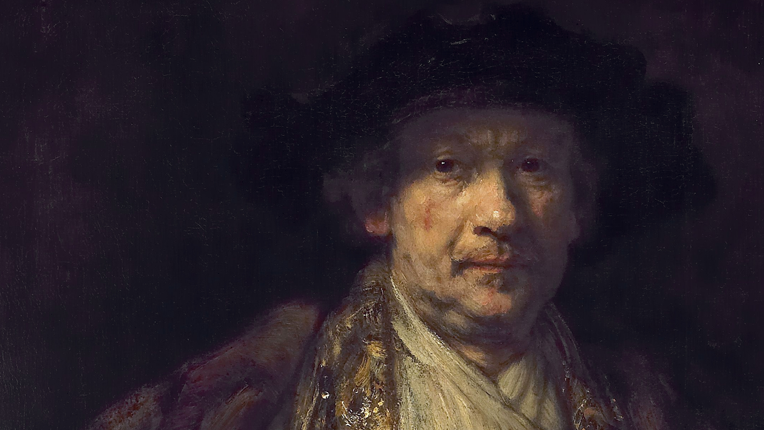Describe How Rembrandt Uses Light in His Paintings
Request Answer. You can use it as a guide to set up at your own studio space.

The Artists Of Light Rembrandt Van Rijn Adam Marelli Workshops
As such this is a kind of lighting that suits low key.

. With the point of the triangle at the bottom so an upside down triangle Ill explain exactly how to do this in a minute. Rembrandt created his distinctive portraits with a small palette of colors dominated by dark earth tones and golden highlights. The key in Rembrandt lighting is creating the triangle or diamond shape of light underneath the eye.
Even by Dutch standards Rembrandts preoccupation with direct observation was exceptional and continued throughout his career. He came up with the use of a spotlight in painting a beam of light lightens the head and shoulders of the main figure while leaving everything else in shadow. It has been said that a painter has to choose between putting the emphasis on brilliant colour or.
He was born in the city of Leiden but abandoned his university studies to devote himself to painting and completed his training in Amsterdam under Pieter Lastman who specialized in historical. Rembrandt s use of light is accurate in the way that human perceive it. Be notified when an answer is posted.
Why Use Rembrandt Lighting. Chiaroscuro means light and shade in Italian. Living in the northern part of Europe during the 17th century Rembrandt was exposed to the Protestant view of Baroque art.
Rembrandt used it to emphasize the faces and hands in his portraits. Rembrandt lighting is a dramatic light. Rembrandt was also recognized for his ability to convey the emotions of the subjects in historical works.
Rembrandt used lighting effects to achieve an impression of depth. How did Rembrandt use light and dark in his paintings. First place your light source key light at a 45-degree angle with respect to the models nose.
The effective use of a limited palette and the rich dark transparent backgrounds all set off the subjects of his portraiture in a way never seen before and often imitated afterwards. It is based on the principle that strong contrasts of light and shadow can help to reveal or conceal details on a surface making it interesting to look at. This painting is interesting because Rembrandt chose to conceal his character in this self-portrait through the use of chiaroscuro.
You can see it in the telltale upside. Artists achieve this by using different gradients and hues. Make sure the light is just above the subjects head angled down.
He did not need HDR vibrance or even the color green. Rembrandts use of light portrays a sense of reserve and ambience. Rembrandts depiction of the minister.
2 light Rembrandt setup or 1 light reflector If super contrasty drama isnt your jam you can easily tone down the drama by using a second light or reflector to fill in some of the shadows. Here I used a Rembrandt lighting pattern with direct sunlight in the late afternoon. In general terms chiaroscuro gives the effect of a strong source of light from outside the canvas hitting directly on the subjects.
For the aspiring photographer it is interesting to know that Rembrandt was rumored to paint with only four colors. Rembrandts use of a glowing light is his portrait paintings are what make his work so distinguishable. The eyes are the windows showing the emotions that were really.
It could be a hand or a bolt of gold fabric but whatever light comes into his paintings it all seems to drip like liquid gold. Heres a basic Rembrandt lighting illustration of the structure. He was a master of chiaroscuro an Italian term for a style using strong lights and heavy shadows to create depth in a painting and a center of interest.
However a crucial aspect of Rembrandts development was his intense study of people objects and their surroundings from life as is obvious in paintings like his early self-portraits and the Saint Paul in Prison of 1627 Staatsgalerie Stuttgart. Portraits by Rembrandt have a special quality- the brilliant use of light to illumine faces jewels and rich fabrics. Other artists before him had toyed with the idea of light and how it should work but not with the way humans actually see light.
Example of Rembrandt light in a low key image. On the other hand Caravaggios harsh use of light puts a spotlight on the characters and creates a dramatic tone for the painting. Often using himself as the subject Rembrandts pictures emerge from the darkness around them.
These are usually bold contrasts that affect the whole composition. One of the best terms to describe and understand the use of lighting in painting is chiaroscuro. Add a second light or reflect at 45 degrees opposite your main light toward the shadowed side of the face.
Want this question answered. Chiaroscuro doesnt only give a strong lighting effect it also bestows the painting with three. This self-portrait also called Self-Portrait With Dishevelled Hair is one of Rembrandts first and is an exercise in chiaroscuro the extreme use of light and shadow of which Rembrandt was known as a master.
The triangle should be no longer than the nose and no wider than the eye. Its actually a lot simpler than it sounds. It is one of those moody setups that plays with chiaroscuro.
His face is mostly. His masterful use of light and shadow is especially apparent in the monochromatic works. Rembrandt painted light dramatically in a gradient how one would actually see it.
Rembrandt achieved recognition in his early career for his representations of biblical and mythological scenes. A triangle of light appears below the eye. Rembrandt and another young artist Jan Lievens specialized in the troniea character study that featured the head of a subject like an elderly man.
This technique from paintings uses the sharp contrasts between light and dark. By giving all of the attention to the eyes of the model there is a more personal connection with the viewer. The use of light focused on the subjects face this draws more attention to the eyes of the subject.
Artists used various methods to achieve this effect. On the shadow side of the face. This painting style originated in Italy in the late 15th century.
He was one of the leading painters of the Dutch Golden Age and is remembered for his dramatic use of light and shadow his versatility and most specifically his portraiture. He used the same concepts of light in his prints using line to make extreme lights and darks that. Rembrandts earliest etching in our collection Jan Cornelis Sylvius preacher 1633 illustrates the portrait of Jan Cornelis Sylvius a minister in the Dutch Reformed Church and mentor to Rembrandts wife Saskia van Uylenburgh.
This creates a dramatic theatrical effect. One side of the face is lit well from the main light source while the other side of the face uses the interaction of shadows and light also known as chiaroscuro to create this geometric form on the face. The contrast between light and dark was very dramatic.
The Man in Oriental Dress of 1632 is one of the first. Remember we dont want to eliminate all the shadows just soften them up some.

A Study Of Rembrandt Style Lighting From The Three Point Perspective Videomaker

A Study Of Rembrandt Style Lighting From The Three Point Perspective Videomaker

The Artists Of Light Rembrandt Van Rijn Adam Marelli Workshops
No comments for "Describe How Rembrandt Uses Light in His Paintings"
Post a Comment